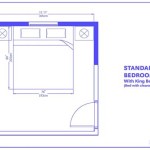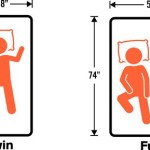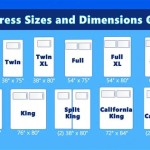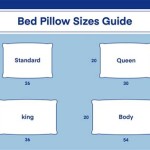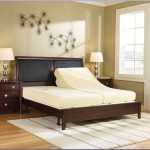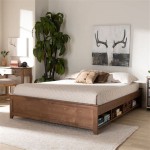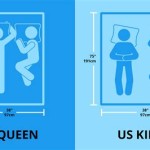Headboards for Adjustable Beds: A King-Size Guide
Adjustable beds have revolutionized sleep, offering customized comfort and therapeutic benefits. The king-size adjustable bed, in particular, provides ample space for individuals or couples seeking a luxurious and personalized sleep experience. While the adjustable base focuses on the mechanics of positioning, the headboard serves as an aesthetic and functional complement, completing the bed's overall design and adding to its comfort. Choosing the right headboard for a king-size adjustable bed requires careful consideration of compatibility, style, and practical needs.
The importance of the headboard should not be understated. Beyond its visual appeal, it provides support while sitting up in bed, protects the wall from damage, and can even incorporate storage solutions. Therefore, understanding the available options and key considerations is crucial for selecting a headboard that seamlessly integrates with a king-size adjustable bed and enhances the overall bedroom environment.
Compatibility Considerations for King-Size Adjustable Beds and Headboards
The first and perhaps most critical aspect of selecting a headboard for a king-size adjustable bed is ensuring compatibility. Adjustable beds have a unique frame structure that can conflict with standard headboard attachment methods. Traditional bed frames provide consistent support and fixed mounting points, whereas adjustable bases often require specific adaptations or universal brackets for headboard integration. Three primary compatibility considerations warrant close examination:
Headboard Bracket Compatibility: Traditional headboards are designed to attach to a standard bed frame. Adjustable beds lack this traditional frame, necessitating the use of headboard brackets. These brackets are typically sold separately and are designed to attach to the adjustable base, providing a mounting point for the headboard. Not all brackets are created equal; it is important to verify that the brackets are compatible with both the specific adjustable bed model and the desired headboard style. Some brackets are designed for specific headboard thicknesses and attachment methods, so meticulous research is essential. Failure to use compatible brackets can lead to instability, damage to the adjustable base, or an inability to attach the headboard altogether.
Adjustable Bed Frame Design: The design of the adjustable bed's frame itself can impact headboard compatibility. Some adjustable beds have recessed frames, while others have frames that extend further outward. The frame's height and shape can influence the placement of the headboard and the visibility of the adjustable base. A recessed frame might require longer headboard legs or taller brackets to achieve the desired height and aesthetic. Conversely, an extended frame might interfere with the headboard's lower edge, requiring modifications or a different headboard design. It's crucial to consider the frame’s architecture and how it interacts with the headboard's dimensions.
Weight Considerations: Adjustable bed bases are designed to support a certain amount of weight, including the mattress and occupants. Adding a heavy headboard can potentially exceed the weight capacity of the adjustable base, particularly if the base is already supporting a heavy mattress. Exceeding the weight limit can negatively impact the adjustable bed's functionality and longevity. Before selecting a headboard, it is essential to determine the weight capacity of the adjustable base and factor in the weight of the mattress and any other components. Lighter headboard materials, such as upholstered fabric or metal frames, might be preferable for maximizing the bed's weight allowance.
Styles and Materials for King-Size Headboards
Once compatibility is addressed, the aesthetic and material considerations come into play. The headboard is a prominent feature in the bedroom, and its style should complement the overall decor and personal preferences. King-size headboards are available in a wide range of styles and materials, each offering unique visual and functional characteristics. Here are some common styles and materials to consider:
Upholstered Headboards: Upholstered headboards are a popular choice, known for their comfort and versatility. They typically consist of a wooden frame covered in padding and fabric. The fabric options are virtually limitless, ranging from plush velvet and luxurious linen to durable microfiber and patterned cotton. Upholstered headboards can add a touch of elegance, sophistication, or casual comfort to the bedroom. The padding provides a soft surface for leaning against while reading or watching television. Different design elements, such as button tufting, nailhead trim, or channel stitching, can further customize the headboard's appearance. Upholstered headboards work well in master bedrooms or guest rooms where comfort is a priority.
Wooden Headboards: Wooden headboards offer a timeless and classic appeal. They can be crafted from various types of wood, each with its own unique grain pattern and color. Oak, maple, walnut, and pine are common choices. Wooden headboards can be stained, painted, or left natural to suit different decor styles. Solid wood headboards are durable and long-lasting, but they can also be heavy. Wooden headboards are available in different styles, from simple and minimalist designs to more ornate and traditional styles. They complement a wide variety of bedroom aesthetics, from rustic and farmhouse to modern and contemporary.
Metal Headboards: Metal headboards offer a sleek and modern aesthetic. They are typically constructed from iron, steel, or aluminum. Metal headboards can be powder-coated in various colors or finishes, providing a versatile design option. Wrought iron headboards often feature intricate designs and scrollwork, adding a touch of elegance and romance to the bedroom. Steel and aluminum headboards tend to have cleaner lines and a more minimalist appearance. Metal headboards are generally lightweight and durable, making them a practical choice for adjustable beds. They are also relatively easy to clean and maintain. Metal headboards are well-suited for contemporary bedrooms or rooms with an industrial-chic design.
Storage Headboards: For those seeking added functionality, storage headboards provide a practical solution. These headboards incorporate shelves, drawers, or cabinets, offering convenient storage space for books, lamps, electronic devices, and other bedside essentials. Storage headboards can help to declutter the bedroom and maximize space. They are particularly useful in smaller bedrooms where storage is limited. Storage headboards are available in various styles and materials, including wood, laminate, and upholstered options. The storage compartments can be open or closed, depending on the desired aesthetic and functionality. The weight of a storage headboard should be carefully considered, as a fully loaded headboard can add significant weight to the adjustable bed.
Practical Considerations for King-Size Headboards with Adjustable Beds
Beyond compatibility and style, there are several practical considerations to keep in mind when selecting a headboard for a king-size adjustable bed. These considerations focus on the user's needs and preferences, ensuring that the headboard enhances the overall sleep experience and complements the adjustable bed's functionality:
Headboard Height: The height of the headboard is a crucial factor, particularly for adjustable beds. When the bed is in a raised position, a low headboard might become partially obscured by the mattress, diminishing its visual impact. Conversely, a very tall headboard might overwhelm the bed and the room. The ideal headboard height depends on the overall height of the adjustable bed frame and mattress, as well as the user's personal preferences. A general guideline is to choose a headboard that extends at least 24 inches above the top of the mattress when the bed is in its flat position. This will ensure that the headboard remains visible and provides adequate back support when the bed is raised. The headboard height should also be proportional to the size of the room. A very tall headboard might look out of place in a small bedroom.
Padding and Comfort: If the headboard will be used for sitting up in bed, the level of padding and comfort is an important consideration. Upholstered headboards with ample padding provide a comfortable backrest for reading, watching television, or using electronic devices. The type of filling used in the padding can also affect comfort. High-density foam provides firm support, while softer materials like down or feather can offer a more luxurious feel. The fabric covering should also be soft and comfortable against the skin. Consider the headboard's surface and if it will be comfortable to lean against for extended periods. If the chosen headboard style lacks substantial padding, adding pillows or cushions can enhance comfort.
Maintenance and Cleaning: The ease of maintenance and cleaning is another practical consideration. Different headboard materials require different cleaning methods. Upholstered headboards might require regular vacuuming or spot cleaning to remove stains. Wooden headboards can be wiped down with a damp cloth. Metal headboards are generally easy to clean with a mild detergent. The chosen headboard material should be resistant to stains, scratches, and fading. Consider the frequency with which the headboard will need to be cleaned and whether the cleaning process is straightforward and convenient. Choosing a material that is easy to maintain can help to prolong the headboard's lifespan and keep it looking its best.
Noise Reduction: Adjustable beds can sometimes generate slight vibrations or noises when in operation. A well-constructed headboard can help to dampen these vibrations and reduce noise. A headboard that is securely attached to the adjustable base and made from dense materials, such as solid wood or thick upholstery, is more likely to minimize noise transmission. Loose connections or flimsy materials can amplify vibrations and create unwanted noise. Consider the headboard's construction and attachment methods to ensure that it provides adequate noise reduction. Adding felt pads to the back of the headboard can further dampen vibrations and protect the wall from damage.

Amolife King Bed Frame With Adjustable Velvet Studded Headboard Blue

Nathan James Harlow King Size Bed Headboard Wall Mount Faux Leather Brown

8 Best Headboards For Adjustable Beds Of 2024

King Headboard Rustic Design Individual Solid Natural Wood Floating Panels Adjustable Height Wall Mounted Compatible With Any Bed Frame And

How To Attach Headboard Adjustable Bed Frame

King Size Storage Bed Frame With 4 Drawers Adjustable Headboard Black Brown

Tufted Tall Bed Upholstered Headboard California King Queen Full Twin Tufting Lucite Leg Frame Platform Adjustable Base Custom Made Etsy

Dextrus Bed Frame King Size With 4 Storage Drawers Adjustable Headboard No Box Spring Needed Grey

Home Furniture Split King Electric Folding Adjustable Bed Frame With Headboard

King Size Bed Frame With Adjustable Headboard Diamond Tufted Upholstered


